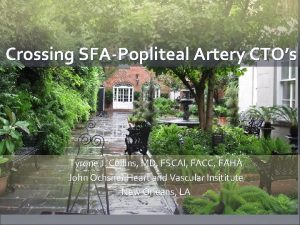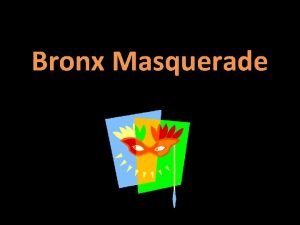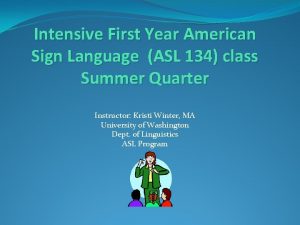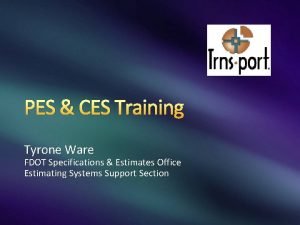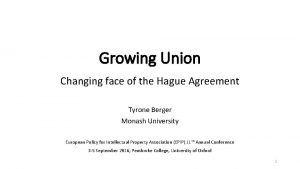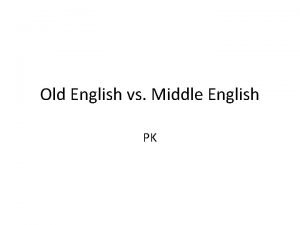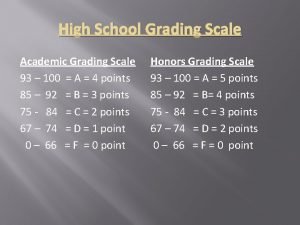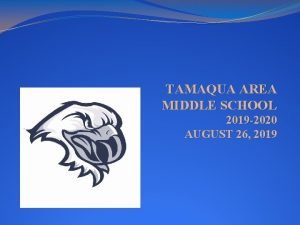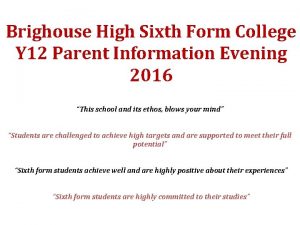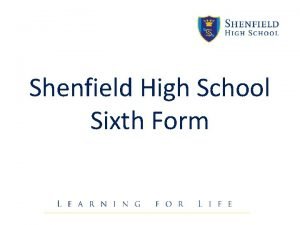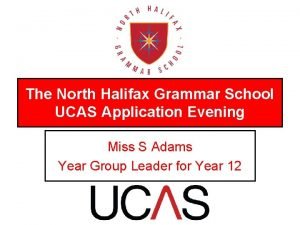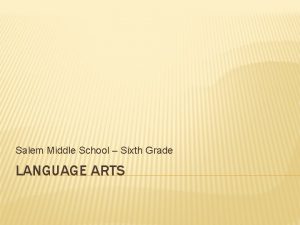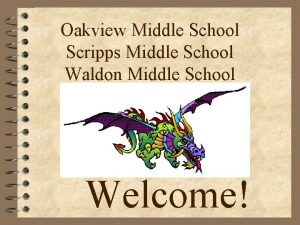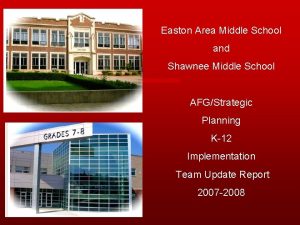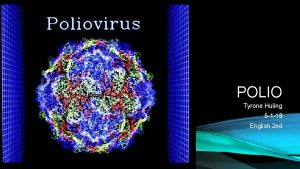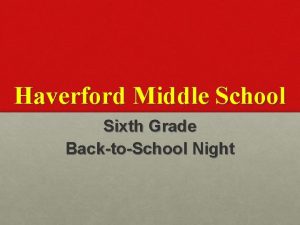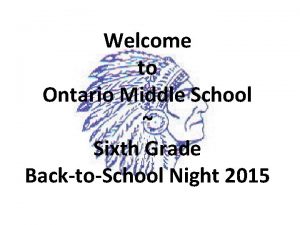Tyrone Area Middle School Sixth Grade English Language













- Slides: 13

Tyrone Area Middle School Sixth Grade English & Language Arts

Classroom Expectations Being ORGANIZED is the key to being Successful! Student will be prepared for class with: lstudent agenda la pencil lnotebook, subject folders ltextbook, packets, worksheets

The Agenda l Assignments-The student will copy daily assignments from the board. l Daily link between parents and teachers- The teacher will make notes in the agenda if homework is incomplete or not done. Parents can also write notes to the teacher in the agenda. l Required signatures- Ideally, parents will check the agenda daily, but a signature is only required at the end of the week. l School policy- Dress code, attendance, discipline, calendars and much more is detailed in the front of the agenda.

Communication l The best communication method is by e-mail. All teacher email addresses are available on the TASD home page. srstoner@tyrone. k 12. pa. us l The Student agenda is a useful communication tool. Written notes can be placed in the agenda or on paper. l Phone messages are also an option. Call the school at 684 -4240 and use the classroom number as the extension where you can leave a message. For emergencies, select operator.

Please enroll in Sapphire to have constant access to your child’s assignments and grades. Please check the Tyrone District home page and select Sapphire Access to complete the application.

Guided Reading/ELO has three components Guided Reading instruction offered on a student’s instructional level. • Novel based instruction with the use of articles, poetry, music, and any other written text that supports the focused skill. • Students may be moved to different groups during the year in order to best address his/her ability level. •

Word Study l Word Study is part of Guided Reading. l The emphasis in Word Study is learning to identify and spell words that have a common rule or pattern. The focus is on taking the pattern or rule and applying it to new words found in written text.

ELO Extended Learning Opportunities l ELO focuses on addressing those specific skills each student needs to acquire or improve in order to make the maximum advances in reading. l The skills addressed are the Eligible Content that appears on the PSSA test as well as in District assessments. l ELO skills are taught in conjunction with the novel and through independent activities.

Writing The writing curriculum is a combination of formal writing instruction (Collins), grammar, and language skills.

What Does the Collins Writing Program Do? l It gives: l Frequent, informal writing opportunities to think, explore, and observe. Frequent writing in all content areas. Opportunities to write in a variety of formats. A focus and consistent feedback. Contextual teaching of writing skills. l l

FCAs- Focus Correction Areas FCAs help students: Students better understand both expectations and evaluation. FCAs: Focus instruction and teacher feedback. Examples of FCAs: *Strong Conclusion *Vivid Verbs *Correct Spelling- especially of common words (your, you’re) *Complete Sentences

The Five Types of Writing Type One: Capture Ideas Writing that occurs frequently. Short, ungraded responses. Points awarded based on student meeting the criteria. Example: On the topic we discussed yesterday, fill 4 lines or more about the ideas you understood best. Worth 5 pts. One draft. Type Two: Respond Correctly Writing that makes a point- has correct answers or content. Often used as a quiz. Ex: Give a 5 to 10 line summary of last night’s reading. Include 2 or 3 main ideas. 10 pts. One draft.

The Five Types of Writing: cont. Type Three: Edit for FCAs Substantive content with 3 FCA’s. Writers create a draft, read it out loud, review, revise, and edit. 50 – 100 pts. One draft. Type Four: Peer Edit for FCAs Writing that follows all Type Three Writing requirements and has been read aloud and critiqued by another. 50100 pts. Two drafts. Type Five: Publish Writing that is publishable, that can go outside the classroom. Major assignment. 100 or 100+ pts. Multiple drafts.
 Inicum
Inicum The sixth sick sheik's sixth sheep's sick lyrics
The sixth sick sheik's sixth sheep's sick lyrics Dr tyrone collins
Dr tyrone collins Tanisha scott bronx masquerade
Tanisha scott bronx masquerade Minidialogues
Minidialogues Tyrone ware
Tyrone ware Tyrone berger
Tyrone berger 6th grade transition words
6th grade transition words Fæder ure þu þe eart on heofonum
Fæder ure þu þe eart on heofonum Northville high school grading scale
Northville high school grading scale Tamaqua middle school
Tamaqua middle school Holly smith
Holly smith Shenfield high school sixth form
Shenfield high school sixth form North halifax grammar school
North halifax grammar school


